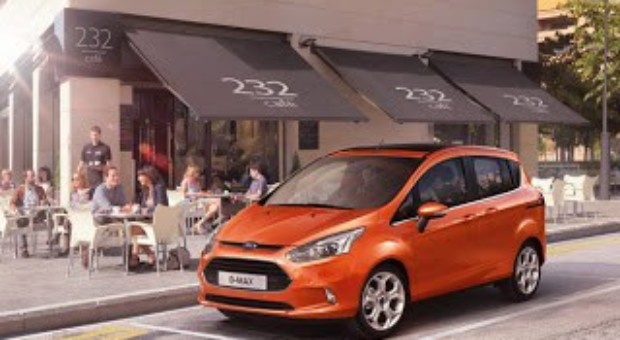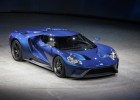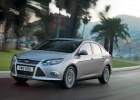
 |
| Ford B-MAX Door System is a Safe System |
Unique Crash Test Procedure Ensures Ford B-MAX Door System is as Safe as it is Innovative
The new Ford B-MAX features a winning combination of unique design, unrivalled economy and what is among the most advanced small car technology in Europe.
The unique Ford Easy Access Door System delivers new levels of convenience, access and flexibility. It features conventional, hinged front doors and rear sliding doors, combined in a new body design. This integrates the traditional central pillar structure into the front and rear doors, rather than forming part of the bodyshell itself.
Ford developed and implemented a unique test procedure to ensure the new B-MAX’s Easy Access Door System is as safe as it is innovative.
The B-MAX integrates central body pillars into hinged front doors and sliding rear doors to create best-in-class access to the compact multi-activity vehicle. However, this fresh approach also required designers and engineers to develop new crash test equipment to ensure B-MAX met Ford’s safety standards.
• Ford test programme ensures B-MAX’s hinged front doors, sliding rear doors and integrated central pillars meet stringent safety standards
• Five-year test programme subjects B-MAX to 5,000 virtual collisions and 40 real-world crashes; Ford devoted three years alone to enhancing rear-door safety and created bespoke testing rig tailored to Easy Access Door System’s unique requirements
• All-new B-MAX capable of withstanding a side impact force in excess of 165 kilonewtons, the equivalent of a small car being dropped from a height of 6.5 metres or the combined weight of three elephants
The five-year testing programme included 5,000 virtual collisions and 40 real-world crashes; three years alone were devoted to providing rear-door safety. This testing process included the construction of a bespoke rig system used to test the reinforced latches.
“B-MAX really took us into uncharted territory,” said Ford safety project manager Tom Overington. “We knew from virtual simulations that the design performs well, but we had to validate this in real crash tests.”
B-MAX doors are fitted with ultra-high strength steel brackets called crash catchers that lock the doors together if the vehicle is hit in the side.
“The latches and crash catchers are crucial because they are designed to keep the doors together during a crash,” Overington said. “We went to great lengths to test them in the virtual and the physical word.”
“We performed virtual car-to-car crashes at a 30 degree angle into the front and rear doors to further validate the performance of the door structure. We also built a special rig to test the reinforced latch mechanism. The forces involved in these tests are massive and the doors performed exactly as expected.”
In addition to being subjected to more than 5,000 computer simulated crash tests, the team conducted 40 complete crash tests and another 100 tests where the car was mounted on a sled and fired into a barrier.
Each physical test takes four days to set up but the impact itself, , is over in fractions of a second.
The result is a car capable of withstanding a side impact force in excess of 165 kilonewtons, the equivalent of a small car being dropped from a height of 6.5 metres or the combined weight of three elephants.
“We’re delighted with the performance of B-MAX,” said Overington. “We are targeting a maximum five-star safety rating when the vehicle is assessed by Euro NCAP later this year.”
It is the first vehicle in its segment to provide the reassurance of the Active City Stop system, designed to help motorists avoid low speed collisions with stationary or slower moving traffic in front.
##Q##The Ford B-MAX really challenges traditional small car thinking, and pioneers a concept not attempted by any other manufacturers,##Q## said Stephen Odell, chairman and CEO, Ford of Europe. ##Q##Its ingenious design opens the doors — quite literally — to exciting new ideas about what##Q##s possible with a compact vehicle.##Q##
Source: Ford




















